691 CELEBRATING THE FOXHOUND
CELEBRATING THE FOXHOUND
by David Hancock
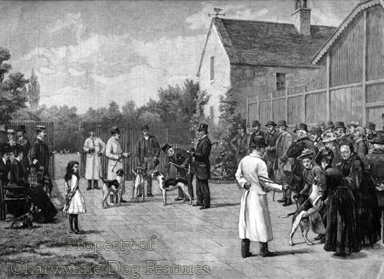
“What other breed of dog is there that could trot out a dozen or fourteen miles along the roads to a meet, then gallop about for five hours or so, often hard enough to tire out two thorough-bred horses in succession, all the time using his nose, intelligence and voice, then come home at night with his stern up, and do it regularly twice a week?…it is a great deal to expect of a dog.”
Sir John Buchanan-Jardine MFH, in his Hounds of the World of 1937.
If any breed of dog should be chosen to epitomise the English sporting dog then the Foxhound has to be a top choice. The Bulldog may serve to exemplify British stoicism, the Bull Terrier to illustrate sheer tenacity and perhaps the Jack Russell to typify English eccentricity. But the Foxhound, for breeding excellence, field performance and sporting aura, some might say handsomeness too, is way out in front as the sporting dog. It may be questionable to regard the Foxhound as a breed, with some packs having claims to a distinct type or variety under that name, as the Dumfriesshire pack long demonstrated. But the Kennel Club recognises the Foxhound as one breed, with one breed standard, and, as with every breed registered with them, will seek standardisation and conformation to a set word picture.
Hounds used on fox, like the Welsh, with its rough-haired ‘griffon’ coat, the Fell, with its lighter frame, those indicating the Curre influence at Chepstow - with that characteristic white coat, and the Dumfriesshire, with its distinctive black and tan jacket (but now sadly lost to us as a pack) and say the Belvoir with its classic tri-colour markings, don’t exactly fit in with one firmly-worded blueprint. Although the KC standard for their breed does allow any recognised hound colour and markings, I doubt however whether they would be happy with merle, as found in the Dunker Hound of Norway, harlequin as found in the Russian Hounds or the red-tick and blue-tick coat colourations found in US hound breeds. All these breeds are recognised by overseas kennel clubs. Foxhound experts like Beckford, Osbaldeston, Paget, Bell, Higginson, Wallace and Rycroft have long expressed clear views on the coat colour and the conformation of the Foxhound.
Beckford gave the view that ‘the colour I think of little moment’; Fox, for over 40 years a huntsman and whipper-in, wrote in 1924, under his pseudonym ‘Yoi-over’, of: “…our native foxhounds…rich and varied colours, tan – deep and light – black and tan, and the white flicked and bitten; one was white and spotted like a Dalmatian carriage dog.” Rycroft has questioned whether the tan eyebrows on a black and tan hound indicate a throw-back to the ancient St Hubert hound, going on to state that blue-mottle is often linked to a good nose. In his masterly Hounds of the World of 1937, Sir John Buchanan-Jardine, wrote: “In the colour of foxhounds there are again different tastes. At one time, Belvoir tan hounds were the only ones in the fashion, and the less white they had on them the better coloured they were considered to be. Now there is a fashion among some Masters for very light-coloured hounds, sometimes almost white…I have known many good hounds marked with blue-mottled colour, and with tan ticks down their legs, perhaps throwing-back to the old Southern hound blood. Again, I have known many very good hounds with a lot of black about them, particularly about the head…it is really a great mistake to allow oneself to be prejudiced by mere colour when breeding hounds…” That judgement could be valuably extended to read when breeding dogs more generally.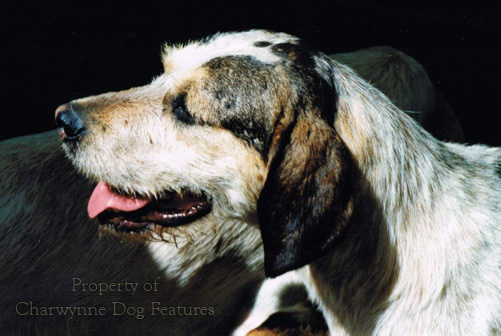
The breeding of Foxhounds should act as a model for dog-breeders everywhere. The whole aim is to produce a better-performing hound, with cosmetic points never to the fore. The mania for pure-breeding has rarely afflicted sportsmen, hound breeders especially. Ronnie Wallace used outcrosses which were American, West Country Harrier, Fell and Old English, but not Welsh, as is often the case in the pursuit of improved scenting and voice in some English packs.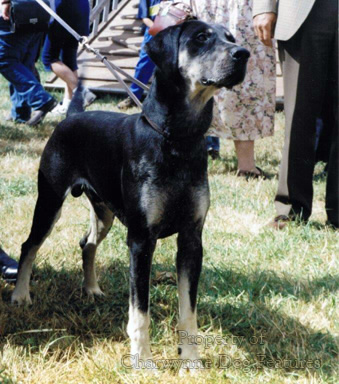
The early years of the twentieth century saw significant changes in hound-breeding; the importance of an infusion of Welsh Hound and Fell Hound blood into many packs, as well as the value of the Belvoir stallion hounds, was recognized. More importantly, the emphasis on drive, nose, cry and pace led to the development of more athletic lighter less-boney hounds. The main instigator of this was Sir Edward Curre at the Chepstow Hunt. By the end of the Great War he had already had some twenty years of combining the merits of top quality English bitches with proven Welsh stallion hounds, usually in a white or light jacket. He inspired others like Sir Ian Amory of the Tiverton and Isaac Bell of the South and West Wilts and influenced the Heythrop, North Cotswold and Cattistock packs. Out went the massively-timbered ‘shorthorns’ and less favoured were the classic tricoloured Belvoir markings. By the 1930s, the ‘Peterborough type’ had been superseded by the lighter-boned, pacier hounds with better stamina. The importance of the ‘female line’ in breeding was recognized, overcoming the slavish adherence to the ‘sire-dominated’ thinking of the previous century.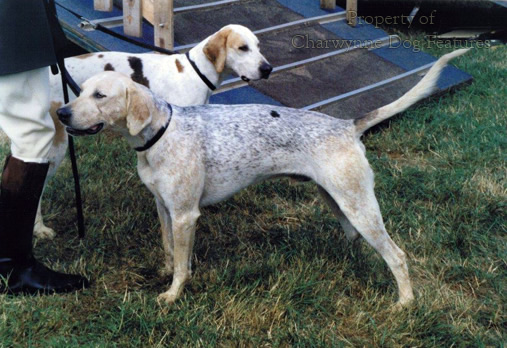
Breeding for performance ahead of appearance and breed-dogma means that the applied breeding criteria are definitive. If the hound doesn’t measure up, it’s not bred from, no matter how pretty it is. It produces healthier sounder hounds since the chase reveals every fault. Racing Greyhounds have succeeded in the show ring but it is not likely that a show Greyhound would win on the track. The socialization of Fox hounds by puppy-walkers allows hordes of delighted children to descend on them in the arena at country shows. This is an exercise that could not be similarly conducted using a couple of dozen unleashed dogs from quite a number of pedigree breeds. But however admirable their temperament, it’s their anatomy which wins the most praise. In his book Hounds, John Long, 1914, sportsman and veterinary surgeon, Frank Townend Barton was writing: “This brings the author to make a statement that very few will, on reflection, feel inclined to dispute the truth of. It is this: That the Foxhound is built upon lines displaying greater economy of material than that of any other variety of dog. Every ounce of bone and muscle is placed where it can be utilised to the best advantage.”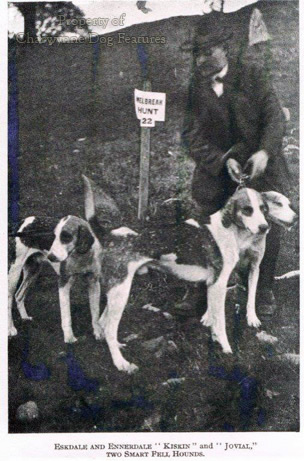
It is this impressive physical stature, allied with great staying power and backed by nose and voice, which has seen the breed exported all over the world, to improve their local hunting dogs, from Sweden and Finland in the north, across the channel to France, and even further afield to America, Australia, South Africa and India. There may well be more paintings of them and books on them than any other breed of dog, such is the long-standing admiration of their prowess. This level of excellence has not come about by accident. In his book The Foxhound of the Future, Baylis, 1963, CR Acton wrote: “Though the science of genetics, itself, is new, the principles of heredity were in operation before Mendel’s time. For years the breeding of fox-hounds by selection was based upon success, and the elimination of such methods as were unsuccessful. Such success was achieved by methods that were, unbeknown to the exponents, to a certain extent in accordance with the principles upon which the science of genetics is based. Hugo Meynell, Lord Henry Bentinck, Lord Willoughby de Broke, Lord Fitzhardinge were applied biologists, whether they realized the fact or not.”
It is to such men that we owe the Foxhound of today, and, whatever its restricted use, it stands as a tribute to British livestock breeding down several centuries. In the first volume of The Foxhound Studbook, published in 1866, by Cornelius Tongue, it was stated that “the successful breeder of hounds should follow the principles of the successful breeder of race-horses, as it is invariably found that those animals are most to be depended upon for the perpetuation of their species whose genealogy can be traced in the greatest number of direct lines to great celebrities of olden times.” In other words, study the pedigrees! And, whether the Foxhound graces the conformation show scene or parades at Honiton and Peterborough, the breeding behind the hound will come through, backed by informed selection and as always, cheered on by a host of admirers. The Foxhound reigns supreme as the canine athlete.